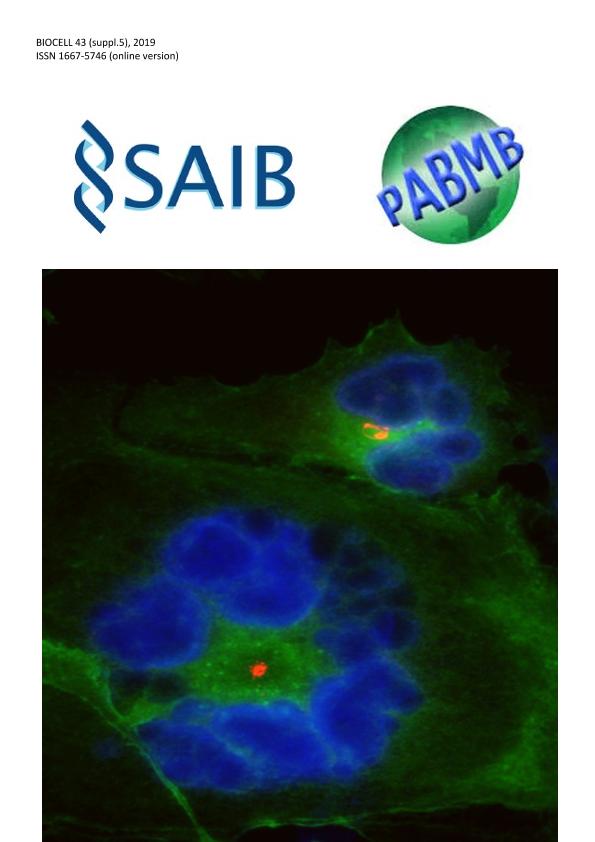Evento
Evaluation of enzymatic activities in lindane-contaminated soils during their restoration by biorremediation techniques
Raimondo, Enzo Emanuel ; Costa Gutierrez, Stefanie Bernardette
; Costa Gutierrez, Stefanie Bernardette ; Sineli, Pedro Eugenio
; Sineli, Pedro Eugenio ; Fuentes, María Soledad
; Fuentes, María Soledad ; Benimeli, Claudia Susana
; Benimeli, Claudia Susana
 ; Costa Gutierrez, Stefanie Bernardette
; Costa Gutierrez, Stefanie Bernardette ; Sineli, Pedro Eugenio
; Sineli, Pedro Eugenio ; Fuentes, María Soledad
; Fuentes, María Soledad ; Benimeli, Claudia Susana
; Benimeli, Claudia Susana
Tipo del evento:
Reunión
Nombre del evento:
The LV Annual SAIB Meeting and XIV PABMB Congress
Fecha del evento:
05/11/2019
Institución Organizadora:
Sociedad Argentina de Investigación Bioquímica y Biología Molecular;
Título de la revista:
Biocell
Editorial:
Tech Science Press
ISSN:
1667-5746
Idioma:
Inglés
Clasificación temática:
Resumen
Lindane is an organochlorine pesticide that, due to its persistence in the environment, is still detected in different matrices. Bioremediation using actinobacteria consortia and agriculture residues proved to be successful for the restoration of lindano contaminated soils. Furthermore, soil enzymatic activities including oxidoreductases and hydrolases are used as sensitive indicators to evaluate the soil quality, due to their participation in a range of biochemical reactions which take place in the environment. The aim of this work was to select soil enzymatic activities in order to be used as indicators of efficiency during the bioremediation of lindane contaminated soils. Bioremediation tests were carried out in microcosms formulated with different soil types, contaminated with 2 mg kg-1 of lindane, bioaugmented with 2 g kg-1 of an actinobacteria consortium and biostimulated with sugarcane bagasse or filter cake in the following soil:amendment proportions (100:0, 98:2, 90:10), under previously optimized conditions. The microcosms were incubated at 30 °C for 14 days and periodic samples were taken to determine lindane removal by gas chromatography and enzymatic activities using the traditional techniques reported in literature with slight variations. All appropriated controls were performed. At the end of the assay, the pesticide removal percentages were different among the treatments and soil types, and the enzymatic activities were greater at day 14 than at day 0. In bioaugmented soils, the enzymatic activities were greater than in non-bioaugmented controls. In addition, biostimulation of bioaugmented and non-bioaugmented microcosms increased the values of these biological parameters. However, it was observed that lindane had an inhibitory effect on dehydrogenase, fluorescein diacetate hydrolysis, acid and alkaline phosphatases activities, while catalase was stimulated by the pesticide. Urease was slightly inhibited or not affected by the presence of the pesticide, depending on the evaluated condition. Based on their sensitivity, catalase, fluorescein diacetate hydrolysis and acid phosphatase were selected as appropriate indicators to assess the effectiveness of the bioremediation process in subsequent studies. The obtained results demonstrated that the simultaneous use of the actinobacteria consortium and the agroindustrial residues was suitable for the treatment of soils of different textural classes contaminated with lindane, which led to an increase in the enzymatic activities values, with a consequent improve in the quality of bioremediated soils.
Palabras clave:
LINDANE
,
BIOREMEDIATION
,
ACTINOBACTERIA
,
SOIL ENZYMES
Archivos asociados
Licencia
Identificadores
Colecciones
Eventos(INSIBIO)
Eventos de INST.SUP.DE INVEST.BIOLOGICAS
Eventos de INST.SUP.DE INVEST.BIOLOGICAS
Eventos(PROIMI)
Eventos de PLANTA PILOTO DE PROC.IND.MICROBIOLOGICOS (I)
Eventos de PLANTA PILOTO DE PROC.IND.MICROBIOLOGICOS (I)
Citación
Evaluation of enzymatic activities in lindane-contaminated soils during their restoration by biorremediation techniques; The LV Annual SAIB Meeting and XIV PABMB Congress; Salta; Argentina; 2019; 1-6
Compartir



